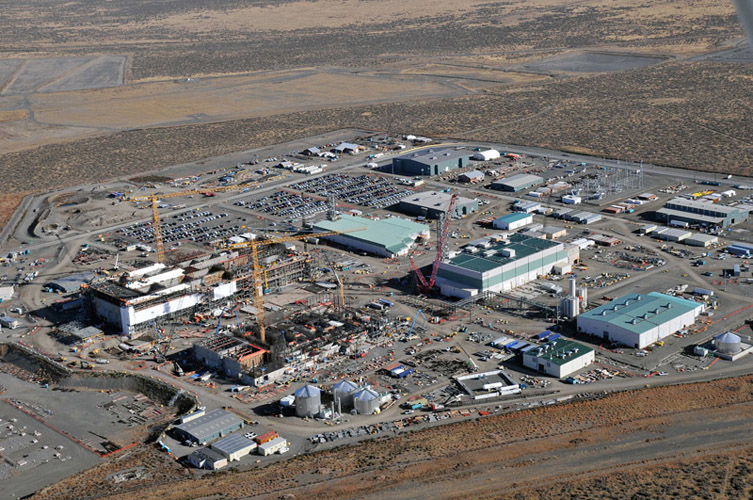Krall LM, Macfarlane AM, and Ewing RC, Nuclear waste from small modular reactors, Proceedings of the National Academy of Sciences (PNAS); (2022); 119 (23): e2111833119. https://pubmed.ncbi.nlm.nih.gov/35639689/. https://www.pnas.org/doi/10.1073/pnas.2111833119.
[A study published in the Proceedings of the National Academy of Sciences (PNAS) in May 2022 indicates that small modular reactors (SMRs) – nuclear reactors designed to produce <300 megawatts (MW) of electricity – are likely to exacerbate the challenges of nuclear waste management and disposal. (Krall et al, 2022) The study, coauthored by Lindsay M. Krall and Rodney C. Ewing of the Center for International Security and Cooperation at Stanford University and Allison M. Macfarlane, of the School of Public Policy and Global Affairs at University of British Columbia Vancouver, a former Chair of the US Nuclear Regulatory Commission (NRC).
Developers, vendors and others touting SMRs and other “advanced” reactors claim that they will create less spent nuclear fuel (SNF) or high-level waste (HLW) than traditional 1,000 MW pressurized water reactors (PWRs), the prevalent type of reactor in commercial operation today. However the promoters “often employ simple metrics, such as mass or total radiotoxicity” to support their claims.
About 30 of the 70 SMR designs listed in the International Atomic Energy Agency (IAEA) Advanced Reactors Information System are characterized as “‘advanced’” reactors, which would use non-water coolants (e.g., helium, liquid metal, or molten salt).
For this study, Krall et al estimated the amount and characterized the nature of the nuclear waste from 3 distinct proposed SMR designs championed as advanced under development by NuScale, Terrestrial Energy, and Toshiba. The designs, respectively, involve proposed water-cooled, molten salt–cooled, and sodium-cooled SMRs. Krall et al analyzed the energy-equivalent volume, radio-chemistry, decay heat, and fissile isotope composition of spent fuel, high-level waste (HLW), and low- and intermediate-level (LILW) low-level waste streams. Their calculations indicate the SMRs are likely to “produce more voluminous and chemically/physically reactive waste” than traditional light water reactors.
Specifically the research group’s calculations indicate SMRs may generate 2 to 30 times more radioactive waste in need of management and disposal than conventional reactors per unit energy extracted.
Although the Krall analysis focuses on only 3 of dozens of proposed SMR designs, it advances that intrinsically higher levels of neutron leakage (causing activation of reactor materials) associated with SMRs suggests that most designs are inferior to traditional commercial reactors with respect to the generation, management, and final disposal of nuclear waste.
“This increase of volume and chemical complexity will be an additional burden on waste storage, packaging, and geologic disposal. Also, SMRs offer no apparent benefit in the development of a safety case for a well-functioning geological repository.”
The finding of additional waste volume is attributed to the use of neutron reflectors and/or of chemically reactive fuels and coolants in SMR designs.
Moreover, the volume of waste and energy-equivalent volume of waste are not the only important evaluation metrics. “Nuclear reactors generate several distinct waste streams, which contain variable concentrations of radionuclides that have a range of half-lives from hours to millions of years and a variety of very different nuclear and chemical properties.” The radionuclide composition and speciation are “important parameters” for consideration of nuclear waste disposal in a geologic repository.
In the analysis, Krall et al note that management and disposal of SNF or HLW must take into account metrics beyond mass, volume, or radioactivity and consider: “ • the chemistry of the SNF matrix and its radionuclide contents, which influences the environmental mobility of radionuclides and their consequent potential to deliver radiation doses to humans in the biosphere; • the heat generated by radioactive decay, which can damage the SNF matrix, as well as other components of the barrier system (e.g., the stability of backfill clays used to inhibit radionuclide transport); and • the concentrations of fissile isotopes in the SNF, which influence its potential to sustain a heat-generating critical chain reaction that can damage the fuel and barrier systems in a geologic repository .”
“These variables depend on the SNF radiochemical composition (i.e., the radionuclide amount and type, including their chemical properties, half-lives, decay modes, and daughter products), which in turn, depends on the initial fuel composition, its final burnup, and the time elapsed since it was discharged from the reactor. In addition, the in-core neutron energy spectrum affects the types and amounts of radionuclides formed in the fuel and reactor materials, such that the composition of SNF generated by a moderated thermal-spectrum reactor will differ from that generated by a fast reactor.”
The specifics of waste chemistry is also relevant for determination of how any particular nuclear material may be stored. Proposed SMRs “employ chemically exotic fuels and coolants (e.g., metallic sodium, metallic uranium, and uranium tetrafluoride) that react rapidly with water and/or atmospheric oxygen.” Experience with the handling and disposing of these chemically unstable waste streams is limited.
Krall et al add that exotic spent fuel, coolant, and/or moderator materials will require treatment and conditioning prior to disposal, but, as the properties of the by-products and infrastructure associated with such processes are uncertain, the additional waste streams generated by treatment and conditioning processes are not addressed in this study.
Krall et al conclude:
“This analysis of three distinct SMR designs shows that, relative to a gigawatt-scale PWR, these reactors will increase the energy-equivalent volumes of SNF, long-lived LILW, and short-lived LILW by factors of up to 5.5, 30, and 35, respectively. These findings stand in contrast to the waste reduction benefits that advocates have claimed for advanced nuclear technologies. More importantly, SMR waste streams will bear significant (radio-)chemical differences from those of existing reactors. Molten salt– and sodium-cooled SMRs will use highly corrosive and pyrophoric fuels and coolants that, following irradiation, will become highly radioactive. Relatively high concentrations of 239Pu and 235U in low–burnup SMR SNF will render recriticality a significant risk for these chemically unstable waste streams.”
“SMR waste streams that are susceptible to exothermic chemical reactions or nuclear criticality when in contact with water or other repository materials are unsuitable for direct geologic disposal. Hence, the large volumes of reactive SMR waste will need to be treated, conditioned, and appropriately packaged prior to geological disposal. These processes will introduce significant costs—and likely, radiation exposure and fissile material proliferation pathways—to the back end of the nuclear fuel cycle and entail no apparent benefit for long-term safety.
Although we have analyzed only three of the dozens of proposed SMR designs, these findings are driven by the basic physical reality that, relative to a larger reactor with a similar design and fuel cycle, neutron leakage will be enhanced in the SMR core. Therefore, most SMR designs entail a significant net disadvantage for nuclear waste disposal activities. Given that SMRs are incompatible with existing nuclear waste disposal technologies and concepts, future studies should address whether safe interim storage of reactive SMR waste streams is credible in the context of a continued delay in the development of a geologic repository in the United States.”]



























